
Precise and consistent product filling is crucial for manufacturers. Whether you are in food and beverage, pharmaceuticals, or cosmetics, accurate filling directly impacts product quality, regulatory compliance, and customer satisfaction.
However, many manufacturers still rely on manual filling processes, which can lead to variability, spillage, and inefficiency. These inconsistencies can increase costs, waste, and production downtime, ultimately affecting brand reputation and scalability.
To overcome these challenges, you must turn to automated packaging equipment that enhances precision and consistency. By integrating filling machines into production lines, businesses can significantly improve accuracy, minimize waste, and streamline operations.
Why Filling Consistency Matters for Your Brand and Bottom Line
Precise and consistent filling directly impacts product integrity, consumer trust, and business success.

Meeting Consumer Expectations
Customers expect consistent product quality, and even slight variations in fill levels can negatively affect their perception of a brand. A bottle filled inconsistently can lead to dissatisfaction, returns, and lost business, making accuracy a critical factor in maintaining a strong brand reputation and competitive edge.
Avoiding Product Waste and Recalls
Overfilling leads to unnecessary product loss which increases production costs over time. On the other hand, underfilling can result in regulatory non-compliance and customer complaints. In industries like pharmaceuticals and food, inaccurate filling could even lead to recalls and legal consequences, damaging your brand’s credibility.
Ensuring Regulatory Compliance
Various industries must adhere to strict regulations about product weight, volume, and consistency. For example:
- Food and Beverage: Compliance with FDA and USDA packaging regulations.
- Pharmaceuticals: Meeting precise dosage requirements to ensure patient safety.
- Cosmetics: Adhering to labeling and content accuracy standards to maintain consumer trust.
Manufacturers who fail to meet these standards risk fines, legal repercussions, and customer loss. Investing in accurate filling processes ensures compliance and drives sustainable growth by strengthening long-term operational stability, reducing waste, and enhancing consumer trust.
The Advantages of Upgrading to Semi-Automated Filling Machines
Transitioning from manual operations to automated packaging equipment offers a range of benefits that help manufacturers meet accuracy and efficiency demands.

Ensure Precision Every Time
Filling machines are designed to minimize errors and maintain consistent product volumes. Features like adjustable nozzles and volumetric controls ensure each container receives the exact amount required. This precision is invaluable for industries like pharmaceuticals and food and beverage, where even the slightest variation in fill levels can impact safety, compliance, and consumer trust. By eliminating human error, automatic liquid filling machines help you produce reliable, high-quality products with every batch.
Eliminate Bottlenecks
Automation speeds up the filling process, increasing output while maintaining accuracy. This efficiency minimizes labor costs and allows businesses to meet higher production demands without compromising quality. Faster production cycles mean you can fulfill larger orders in less time, reducing lead times and improving customer satisfaction. Additionally, automated filling reduces the risk of bottlenecks in the production line, ensuring a steady and efficient workflow from start to finish.
Future-Proof Your Production
As demand increases, you need production processes that can scale efficiently. Bottle filling machines allow businesses to expand without the bottlenecks that come with manual filling. Whether a company is launching a new product or entering a larger market, a semi-automated filling system provides the flexibility to increase production capacity without significant additional labor costs. This scalability ensures businesses can grow without compromising on quality or operational efficiency.
Keep Production Running
Unlike complex automated systems, semi-automated filling machines offer easy setup and maintenance. Operators can quickly adjust settings for different product types, reducing downtime and maximizing productivity. The equipment’s intuitive design means that employees require minimal training to operate it effectively, reducing the risk of errors and increasing overall efficiency. Routine maintenance is straightforward, allowing you to keep operations running smoothly without costly delays or extensive repairs.
What Makes a Filling Machine Accurate?
Advanced bottle filling machines come equipped with various features designed to improve accuracy, efficiency, and adaptability.

Adjustable Nozzles and Volumetric Controls
These features allow you to fine-tune the fill level for different container sizes, ensuring every batch meets precise volume requirements. Adjustable nozzles help prevent overflows and underfilling, reducing material waste and ensuring compliance with regulatory weight and volume standards. Additionally, volumetric controls enable manufacturers to maintain product consistency across various batch sizes, reinforcing consumer trust and brand reliability.
Integrated Sensors and Quality Control Features
Many modern automatic liquid filling machines include sensors that detect irregularities in fill levels, preventing errors before they impact the final product. These sensors can identify inconsistencies in weight, volume, or viscosity, triggering adjustments in real-time. This level of automation helps manufacturers avoid costly recalls or product defects, improving overall production reliability and reducing human intervention in quality control processes.
Versatility for Different Products
From thin liquids like beverages to thick creams and gels, filling machines can adapt to a range of product types. This versatility allows you to maintain efficiency across multiple product lines. Whether dealing with foamy, granular, or highly viscous substances, automatic liquid filling machines can be adjusted to meet the unique requirements of each formula. This adaptability makes them an excellent investment for companies looking to diversify their product offerings without needing multiple specialized equipment.
Seamlessly Integrate Filling Machines for Maximum Efficiency
For optimal results, filling machines should be seamlessly integrated into the existing production process.
.jpg?width=900&height=450&name=Blog_PackLeaderUSAPackagingLine_900x450%20(1).jpg)
Building a Complete Packaging Line
Filling machines work best when combined with complementary automated packaging equipment such as labeling systems and cappers to create a fully optimized packaging line. A synchronized system ensures that each product is accurately filled, securely sealed, and properly labeled before reaching the final packaging stage. By incorporating additional automation, you can reduce manual handling, improve consistency, and significantly increase throughput without sacrificing accuracy.
Finding the Right Balance Between Manual and Automation
Semi-automated filling machines offer an ideal middle ground between manual labor and full automation. They increase efficiency while still allowing for flexibility and control. Manufacturers can adjust settings based on production needs, ensuring that different product types and container sizes are handled with precision. This hybrid approach allows businesses to maintain high output levels while avoiding the complexity and costs associated with fully automated systems.
Hassle-Free Integration
Unlike fully automated systems, semi-automated bottle filling machines are designed to be easy-to-operate. Minimal training is required, allowing your staff to quickly learn and manage the system effectively. The intuitive controls and user-friendly interfaces allow operators to adjust fill levels, change product settings, and troubleshoot minor issues easily. Additionally, quick setup and straightforward maintenance ensure that production lines stay up and running with minimal disruptions, making semi-automated filling machines a practical solution for businesses of all sizes.
Ready to Improve Your Production?
Filling accuracy is essential for product quality, customer satisfaction, and regulatory compliance. Manual filling processes introduce inconsistency, waste, and inefficiency, making it difficult for manufacturers to scale their operations effectively.
By integrating automated packaging equipment, businesses can ensure precision, reduce downtime, and enhance operational efficiency. This equipment provides a cost-effective, scalable solution for improving production consistency without the complexity of fully automated systems.
If you are looking to optimize your filling process, explore our high-performance filling machines. With advanced features and seamless integration, our solutions help manufacturers achieve consistent, reliable, and efficient production. Take the next step—schedule a free equipment consultation to find the right filling machine for your production needs!
.webp?width=200&height=135&name=2x-Packleader-logo-large%20(1).webp)

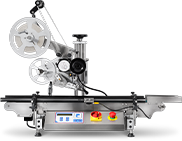
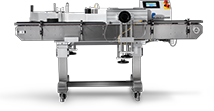
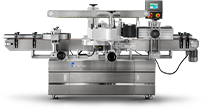
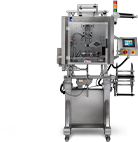
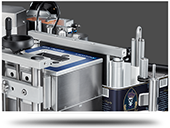
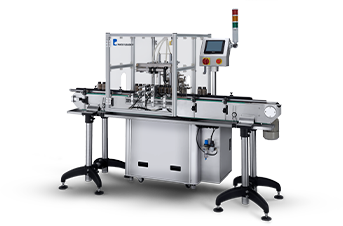
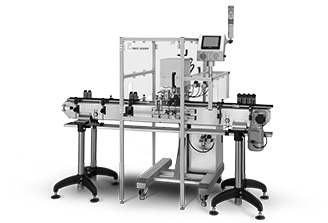
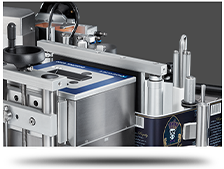





.webp?width=360&name=2x-color-logo%20(1).webp)